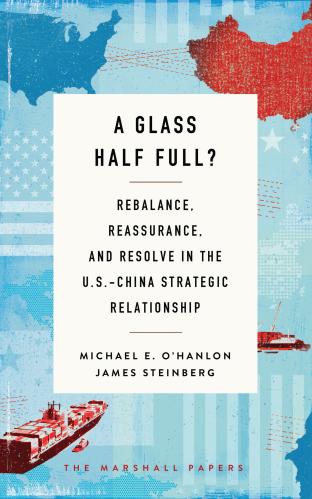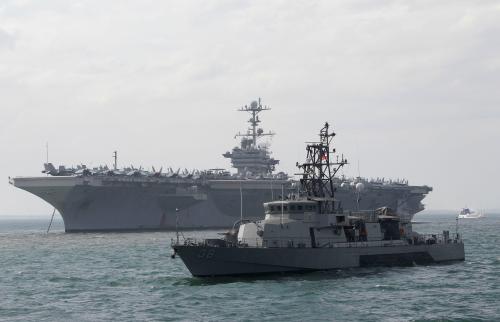An abbreviated version of this piece was published in the New York Times on September 8, 2018 as a letter to the editor.
In an otherwise excellent recent article about China’s military rise, the New York Times dramatized the fact that the Chinese navy now possesses more ships than America’s. Others, including the U.S. Navy, have been issuing the same clarion call of late. Attaining the status of the world’s biggest naval force—to go along with its position as the world’s top manufacturer and, by some measures, already the world’s largest economy—would seem to cement the inevitability of China achieving hegemony in the near future, at least in the broader Asia-Pacific region. Or so one might be led to believe.
In fact, nothing of the sort is true. Leave aside the facts that the United States has some 60 allies and other close security partners to China’s one (which is North Korea, by the way). Or that by standard market exchange rates, U.S. GDP of some $19 trillion compares very favorably with China’s $13 trillion. Or that the annual U.S. defense budget of $700 billion still dwarves China’s $200 billion. Indeed, as one of us argued with Jim Steinberg in our 2014 book, Strategic Reassurance and Resolve, the fact that America’s military budget has been so much larger than China’s for so many years translates into what is still almost a 10:1 U.S. advantage in our cumulative stock of modern weaponry.
Beyond all that, even on the simple, crude measure of the size of navies, the United States remains way ahead.
The reason is simple. Although China has (modestly) more seafaring vessels than the United States, ours are on average bigger—much bigger. That is true even now that China has deployed two mid-size aircraft carriers and a number of impressive destroyers.
If the size of a navy were the top indicator of capability, presumably the New York City Yacht Club (or at least that fraction of it carrying firearms) would possess the world’s most formidable armada. We are of course being facetious, but the larger point is valid.
If the United States Navy valued number of ships above all else, it could build more small boats with the same budget. But it does not. It deliberately values the size (and quality, and armament) of vessels over their sheer number. It thus chooses to build 100,000 ton flat-deck aircraft carriers, 40,000 ton smaller aircraft carriers, large amphibious ships for moving Marines, big surface combatants with sophisticated radar systems and advanced missile defense and land-attack capabilities, and large nuclear-powered submarines with long ranges. It chooses not to prioritize frigates, or other smaller boats like “littoral combat ships,” or mine warfare vessels. In fact, it defines “warship” in such a way that huge numbers of its own smaller vessels do not even make the tally when it comes to counting the size of the blue-water fleet.
Yes, numbers of ships do matter—for maintaining presence in multiple places around the world, for having attrition reserves for wartime contingencies, for complicating enemy planning and targeting. The late John McCain was right to worry about the size and readiness of our Navy, just as President Trump and before him President Obama had been. In the 1990s and 2000s, we took our eye off Navy shipbuilding a bit too much, and most of the current remedial action is justifiable.
But based on calculations the two of us have done in recent years, the U.S. Navy still has a combined tonnage of at least twice that of China’s. The lead has shrunk, from four million tons in the late 1990s to three million tons today, in rough numbers. And yes, our Navy has two major ocean areas to attend to, with both of them extending out to the Persian Gulf—the broader Atlantic and the Indo-Pacific regions. China can concentrate its military efforts mostly on the latter, and indeed mostly on the western Pacific, where it is closing the gap with America and its allies. That is an important concern, and one reason why Secretary of Defense Jim Mattis along with Joint Chiefs Chairman General Joe Dunford are surely right to refocus American military planning on great-power competition with China as well as Russia.
However, let’s not overdo it, and let’s not obsess only about one potentially misleading metric of military capability. We need to avoid the twin perils of fatalistically persuading ourselves that China has already eclipsed us in great-power terms, or of thinking we need yet another huge military buildup at the risk of our fiscal solvency and long-term economic and military power to stanch the hemorrhaging of America’s strategic position. If you want to think about the size of navies, think mostly aggregate tonnage, not numbers of ships. By that measure, for what it’s worth, we are still way ahead.







Commentary
Why China isn’t ahead of the US Navy, even with more ships
September 10, 2018